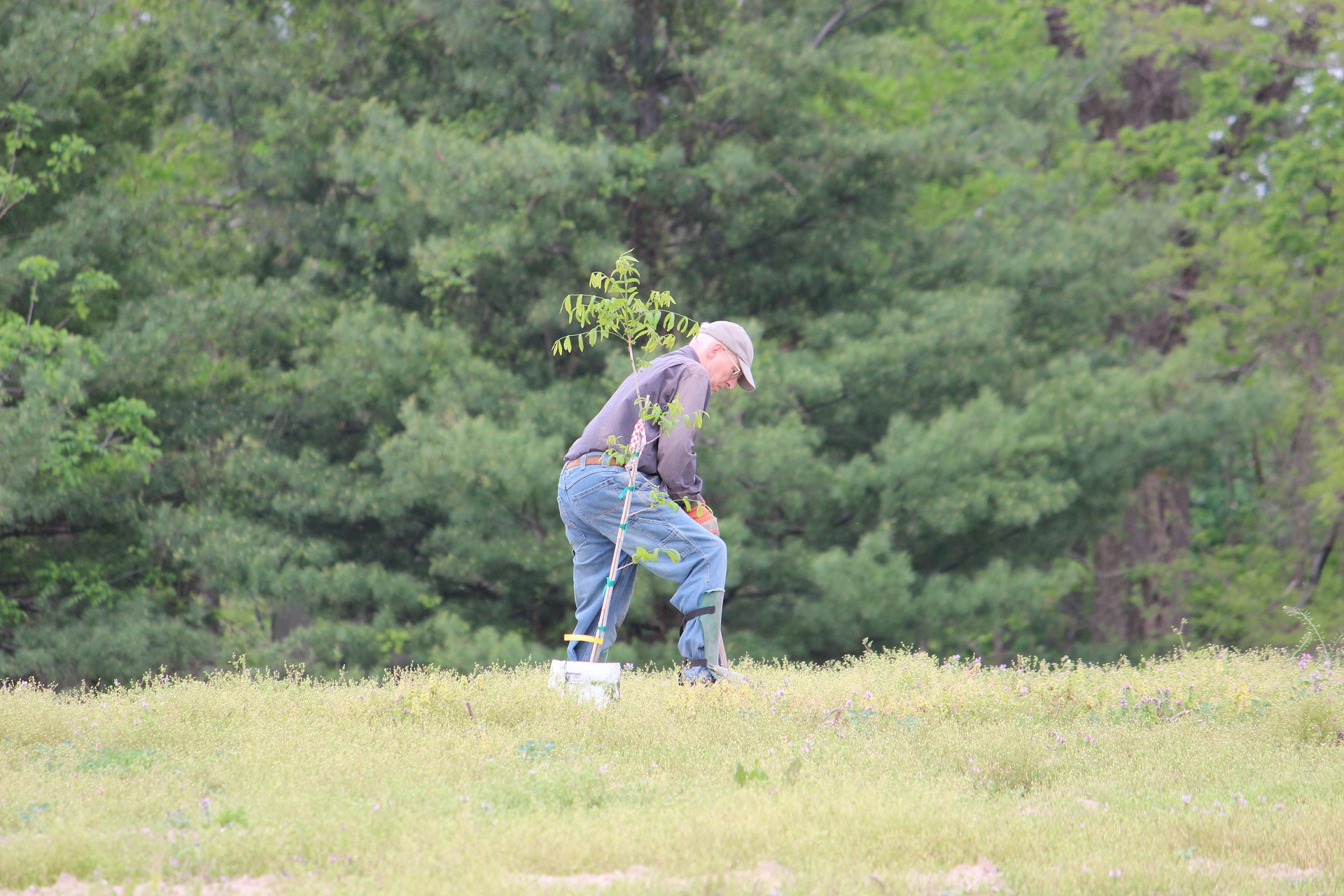 A big planting day is a day of rebirth. When we’re ready to plant, we’ve already graded the site, removed invasive species, and water is moving the way we planned. Then, we add a lot of young life in confidence that we have done everything we can to help them grow.
A big planting day is a day of rebirth. When we’re ready to plant, we’ve already graded the site, removed invasive species, and water is moving the way we planned. Then, we add a lot of young life in confidence that we have done everything we can to help them grow.
With the help of generous volunteers from the Defiance College Fisheries & Wildlife Management Class and the Paulding Soil & Water Conservation District, the Conservancy team and its partners have planted 1,200 bare-root seedlings at the Marie DeLarme project.
After contractors planted the trees and shrubs, volunteers followed behind placing translucent tubes around the trees. The tubes are essential to getting the seedlings off to a strong start and shielding them from deer and rabbits and other animals that would graze on them. The tubes also create micro-habitats, amplify the sun’s rays and give the seedlings a warm environment. As the trees grow, they’ll release water vapor which condenses inside the tube creating a self-watering system.
The tubes stay in place for three to five years. Conservancy staff will check on them periodically, especially after a significant rain or windstorm. Wind can knock the tubes over and bend the trees. Staff will prop them back up to let the trees grow straight. When the trees and shrubs are well-established, the tubes will be removed and re-used on another site.
The seedlings planted in this area include trees that are represented in the surrounding forest such as various oaks and hickories. The shrubs include native fruit-bearing species such as chokeberry, buttonbush, and dogwoods. Because these shrubs flower, they provide nectar and pollen for bees and butterflies. They also harbor the larvae of moths and butterflies which birds feed to their nestlings. The roots of the trees and shrubs will prevent erosion and also take up nutrients including phosphorus and nitrogen, preventing excess nutrients from reaching the Maumee River and Lake Erie.
This important restoration project in Forrest Woods Nature Preserve transformed a former hay field into a healthy wetland adjacent to the Maumee River. Frogs are already laying eggs in the new vernal pools near the Marie DeLarme Creek!
Melanie Coulter said, “With the completion of this parcel, we’ve really effectively protected a big piece of the true Great Black Swamp in Forrest Woods Preserve. We’re looking forward to seeing big changes in a short time in this small field.”





